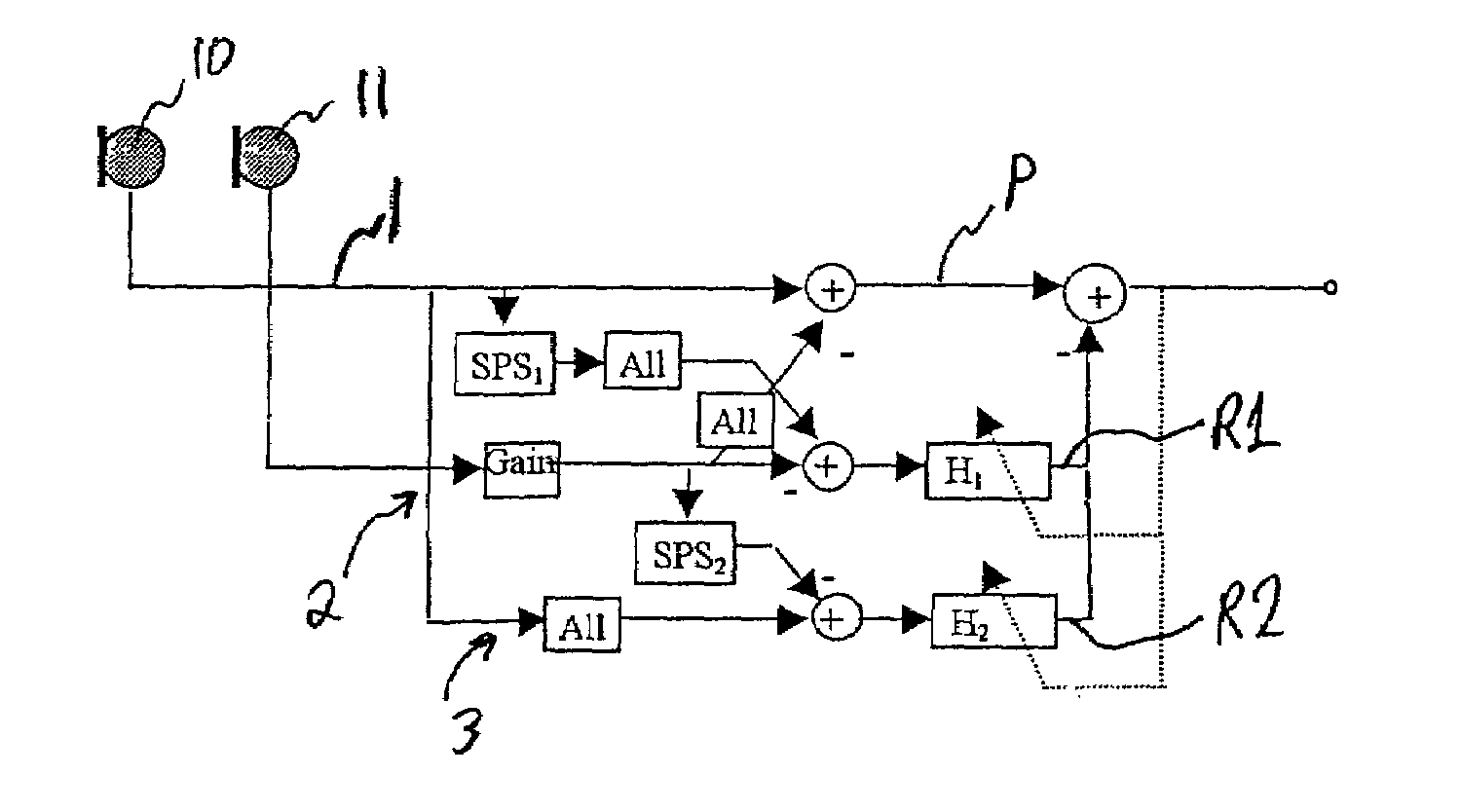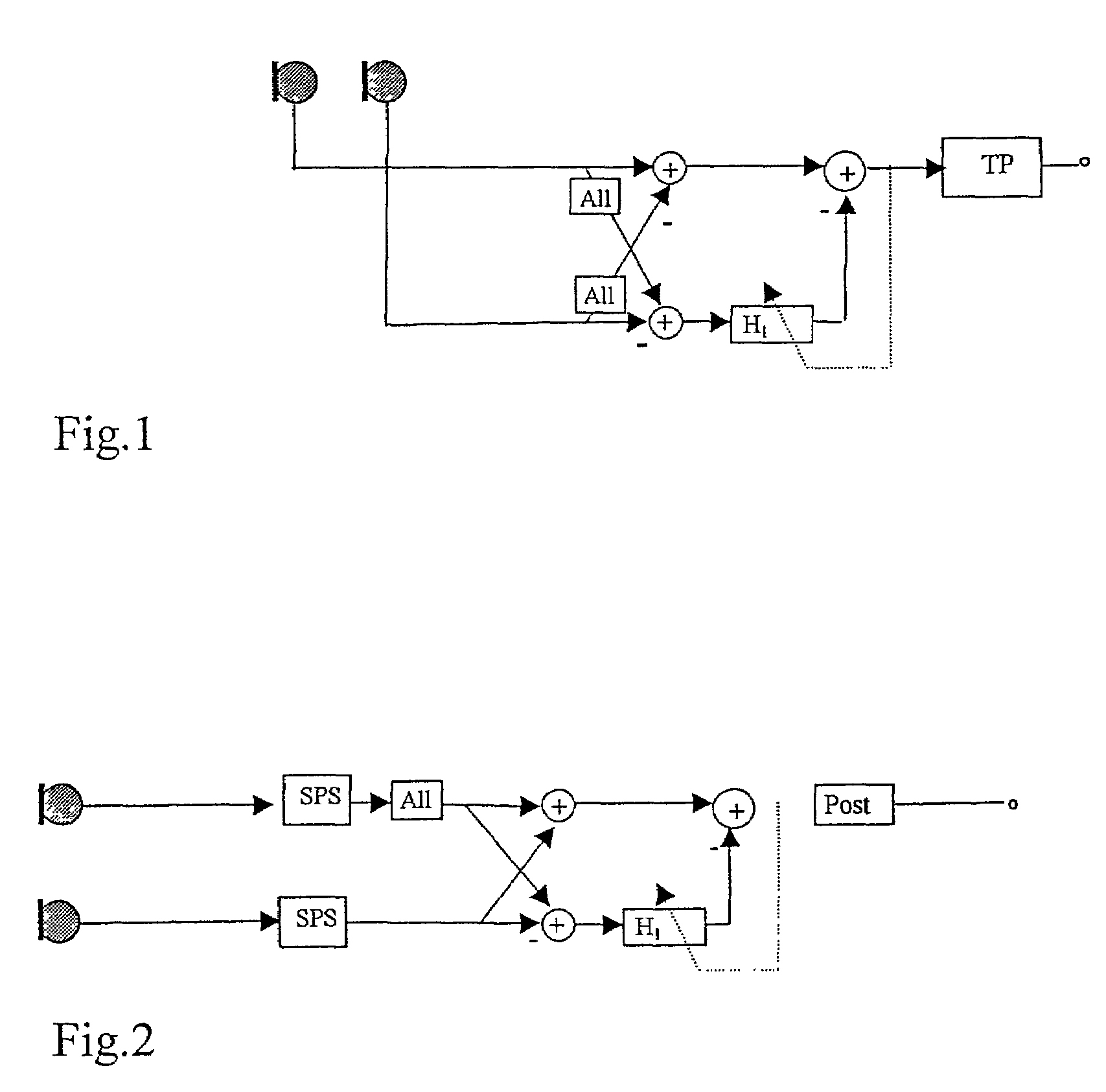Noise reduction method with self-controlling interference frequency
a noise reduction and frequency technology, applied in the direction of transducer casings/cabinets/supports, electrical transducers, instruments, etc., can solve the problems of limited maximum attainable noise reduction, difficulty in compensating for transient noise, and inability to be the case, etc., to achieve maximum effectiveness, good speech quality, and poor speech quality
- Summary
- Abstract
- Description
- Claims
- Application Information
AI Technical Summary
Benefits of technology
Problems solved by technology
Method used
Image
Examples
Embodiment Construction
[0034]FIG. 4 shows 3 block diagrams with unilateral spectral subtraction for the reference input. The microphones 10, 11 are oriented to receive useful signals from the left in the figures.
[0035]In FIG. 4a, a primary signal P of the beam former (for example, a speech signal) is created using a differential array DA for channels 1, 2 (see arrangement c in FIG. 3), the microphones 10, 11 receiving the useful signals, for example a speech signal. FIGS. 4b and 4c show creating primary signal P as sum and difference array SD (see arrangements a and b in FIG. 3).
[0036]An interference reference input processes reference signal R with the additional extension of the unilateral spectral subtraction in differential form according to arrangements d and e in FIG. 3. The difference of the useful signal in channel 2 and the interference-suppressed useful signal from channel 1 is applied to adaptive filter H1. Adaptive filter H1 is adapted in the time domain or, in an equivalent form, in the frequ...
PUM
 Login to View More
Login to View More Abstract
Description
Claims
Application Information
 Login to View More
Login to View More - R&D
- Intellectual Property
- Life Sciences
- Materials
- Tech Scout
- Unparalleled Data Quality
- Higher Quality Content
- 60% Fewer Hallucinations
Browse by: Latest US Patents, China's latest patents, Technical Efficacy Thesaurus, Application Domain, Technology Topic, Popular Technical Reports.
© 2025 PatSnap. All rights reserved.Legal|Privacy policy|Modern Slavery Act Transparency Statement|Sitemap|About US| Contact US: help@patsnap.com



